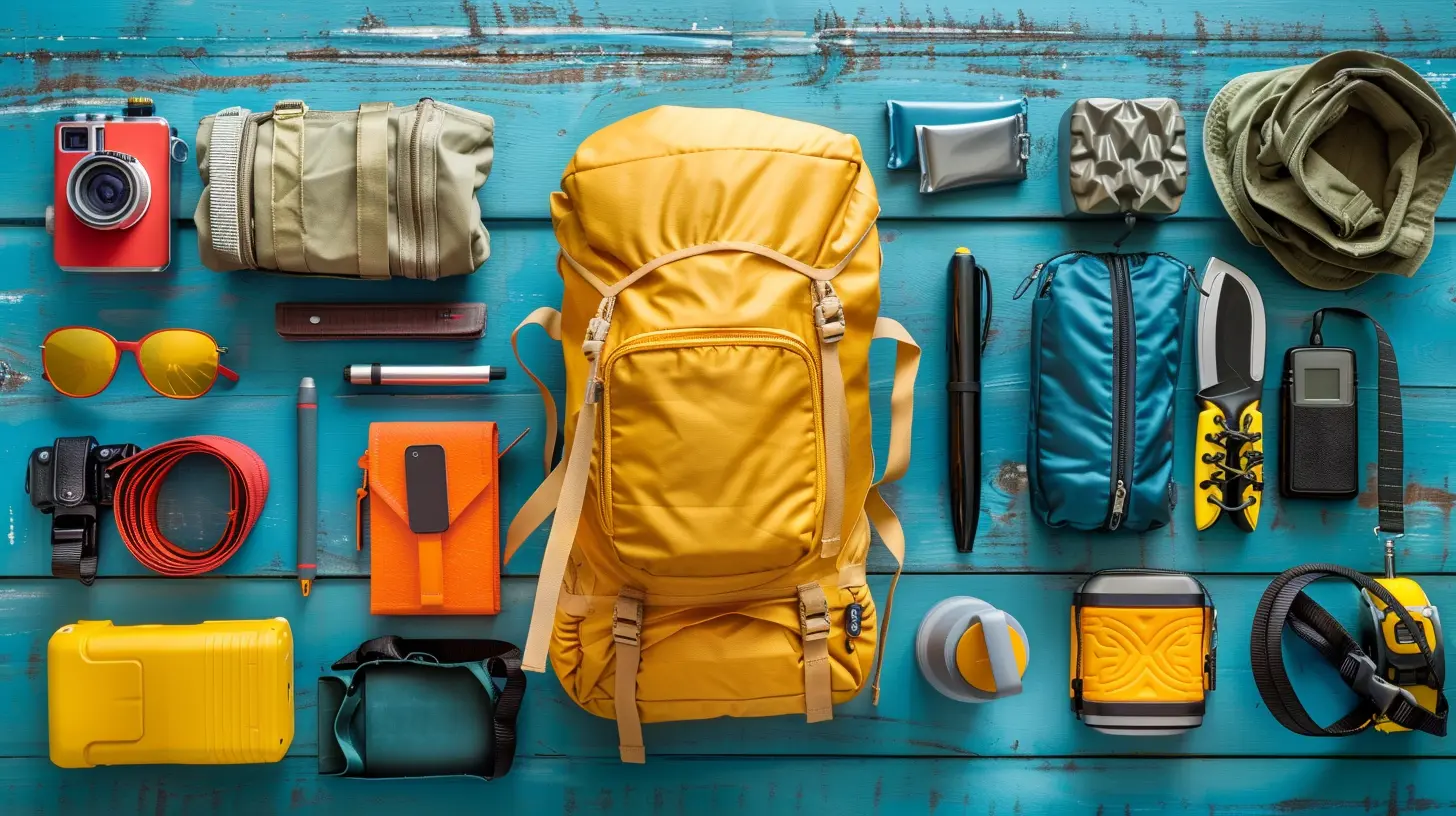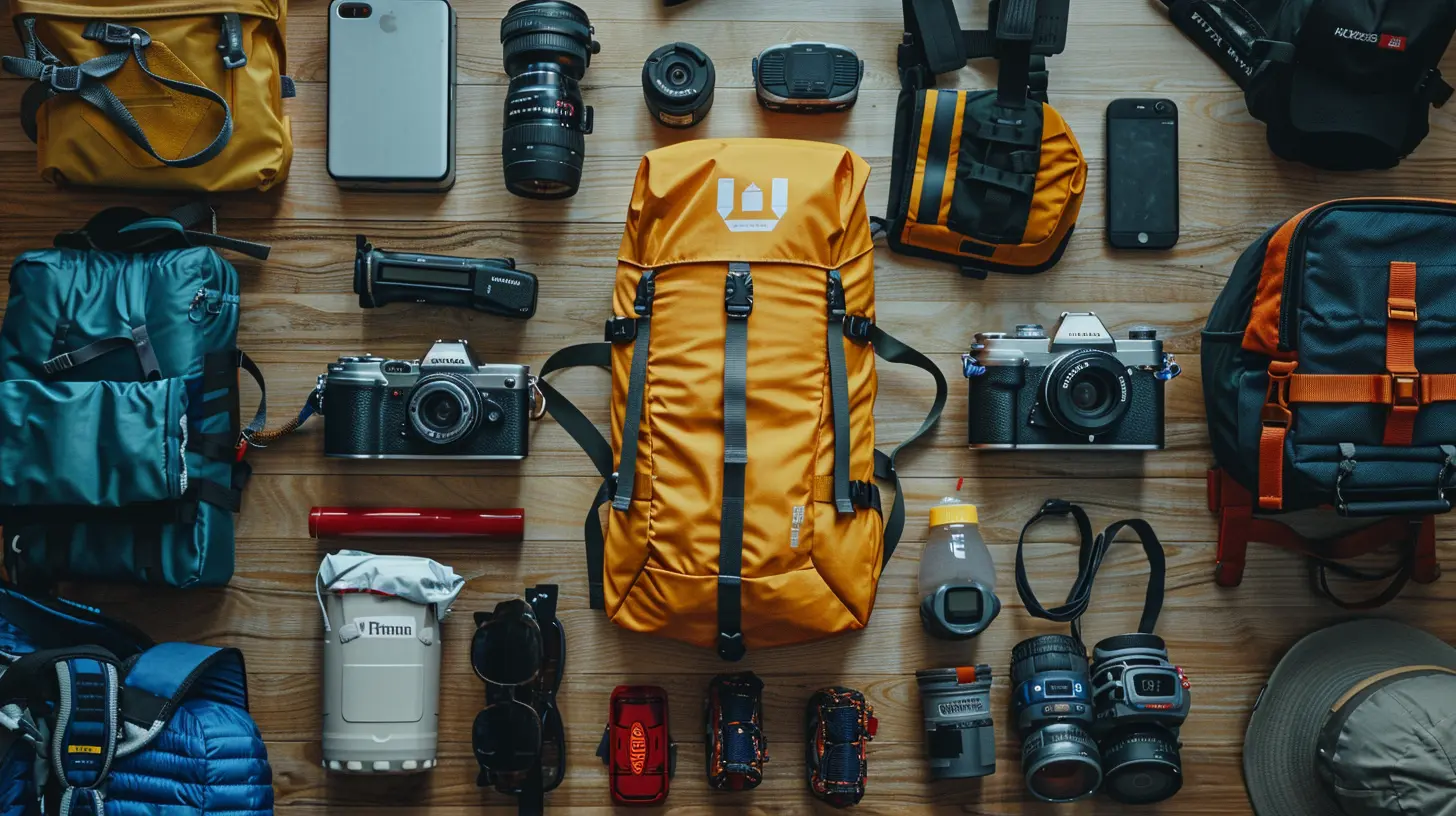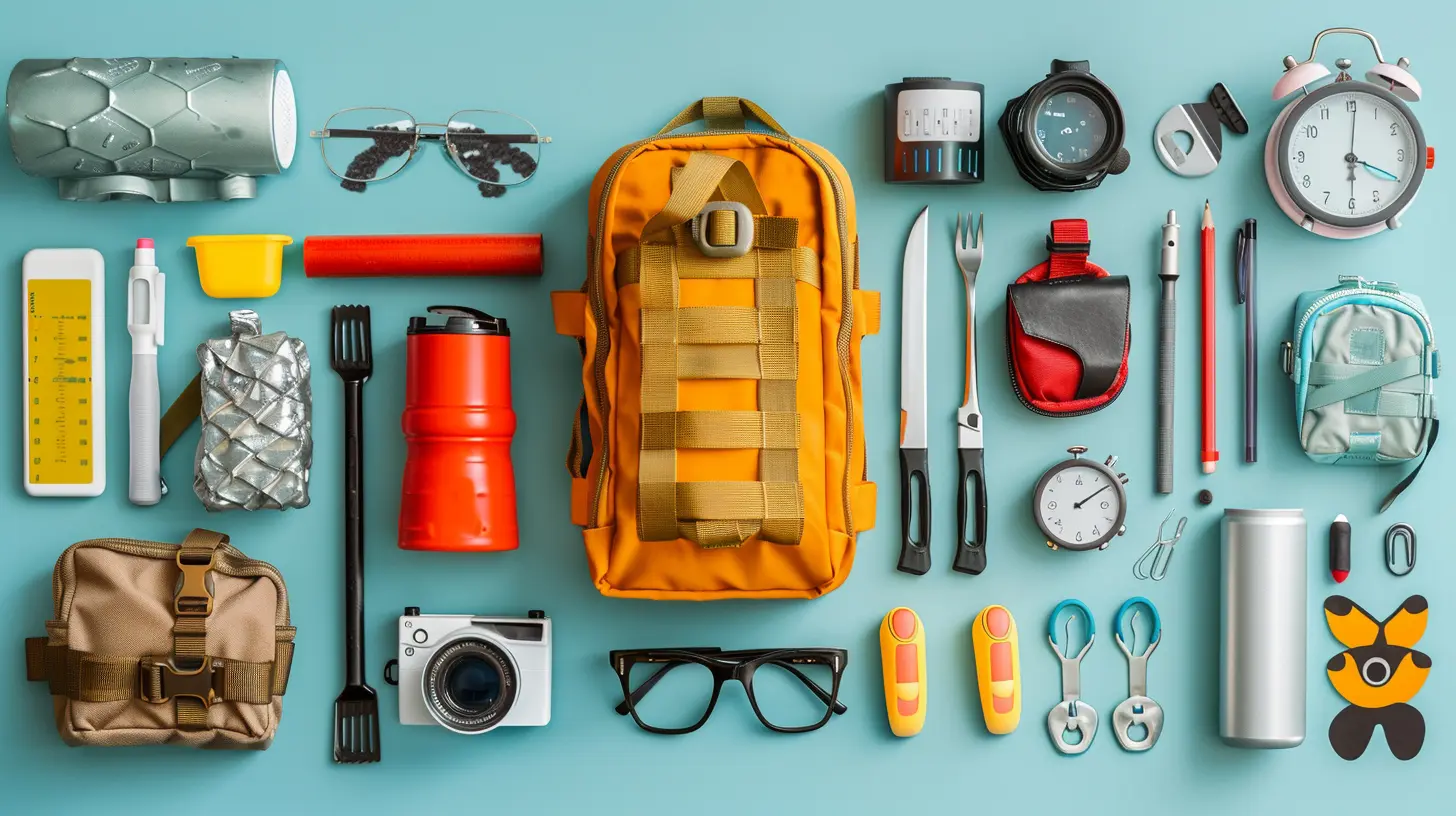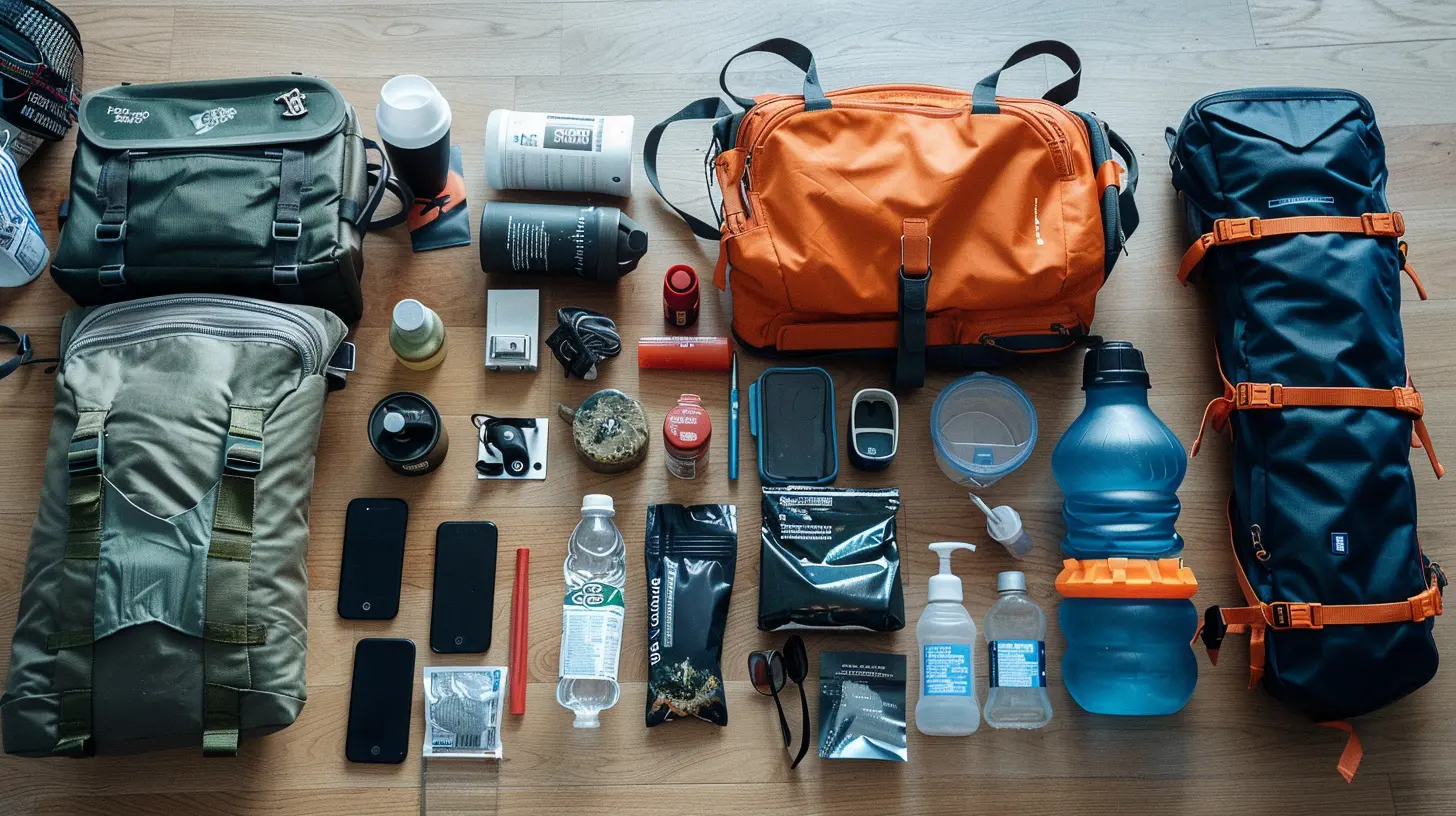What to Pack in Your Travel Safety Kit
7 June 2025
Traveling is one of the most exhilarating experiences—new places, new cultures, and unforgettable memories. But let's be real—unexpected situations can arise, and you need to be prepared. Whether you're hitting the road, hopping on a plane, or backpacking through the mountains, having a well-stocked travel safety kit is crucial. It’s like having a superhero's utility belt—it doesn’t seem important until you actually need it!
So, what should you pack in your travel safety kit? Let’s break it down so you can travel with peace of mind. 
1. Essential First-Aid Supplies
Accidents happen when you least expect them. A small cut, blister, or headache shouldn't ruin your trip. That’s why a first-aid kit is a must-have item in your travel safety kit. Here’s what it should contain:🔹 Adhesive bandages – Cover up small cuts, scrapes, or blisters.
🔹 Antiseptic wipes/alcohol swabs – Clean wounds to prevent infections.
🔹 Tweezers – Useful for removing splinters, ticks, or anything stubborn.
🔹 Medical tape and gauze – If you need to cover a larger wound.
🔹 Pain relievers (ibuprofen, acetaminophen) – Because headaches and body pain can hit anytime.
🔹 Antihistamines – Helpful for allergies or unexpected insect bites.
🔹 Motion sickness tablets – If you tend to get queasy during travel.
🔹 Electrolyte packets – Rehydration salts are lifesavers if you experience dehydration or food poisoning.
You don’t need to carry everything a hospital would have, but these basics can make a huge difference in an emergency! 
2. Medications and Prescriptions
If you take prescription medications, this is a no-brainer—you need to carry enough for your trip plus a few extra days’ worth in case of delays. However, don’t stop at just your daily meds. Here are some additional things to consider:✔ A copy of your prescription – This can be essential if you lose your medication or need a refill in another country.
✔ Backup medications – If you have chronic conditions like asthma or diabetes, always bring extra supplies of inhalers, insulin, or other necessary meds.
✔ Over-the-counter medications – Think digestive aids (antacids, anti-diarrheal pills), cold medicine, or sleep aids.
✔ EpiPen (if needed) – For those with severe allergies, this could be life-saving.
No one wants to think about getting sick while traveling, but being prepared can save you from a major headache—or worse. 
3. Personal Safety and Security Items
Your health isn’t the only thing to protect—you also need to consider your personal security. Whether you're venturing into a crowded city or hiking in remote areas, these items help ensure your safety:🔑 Money belt or anti-theft travel pouch – Keeps your cash, cards, and passport secure under your clothes.
🔑 Doorstop alarm or portable lock – Hotels, hostels, or Airbnbs can have questionable security. Packing a door jam can add an extra layer of protection.
🔑 Personal safety alarm or whistle – This can be used to deter an attacker or alert people if you’re in distress.
🔑 Flashlight or headlamp – Essential for power outages, hiking, or walking in poorly lit areas.
🔑 Copies of important documents – Have digital and paper copies of your passport, visa, insurance, and emergency contacts.
Safety isn’t about paranoia—it’s about preparation. Losing your wallet or having your hotel room broken into is rare, but it’s always better to be ready just in case. 
4. Hygiene and Sanitization Must-Haves
Germs don’t take a vacation, so keeping a few hygiene essentials in your travel safety kit is a smart move. Here are the must-haves:🧴 Hand sanitizer – Because soap and water aren’t always available.
🧴 Disinfecting wipes – Great for wiping down public seating, tables, or even airplane tray tables.
🧴 Face masks – Useful for crowded areas, polluted cities, or preventing illness.
🧴 Tissues & wet wipes – You never know when you’ll encounter a questionable restroom situation.
🧴 Travel-size soap and shampoo – Some places don’t provide them, and they're good for cleanliness on-the-go.
Good hygiene isn’t just about staying comfortable—it helps prevent illnesses that could derail your entire trip.
5. Emergency Communication Devices
Imagine you’re lost in an unfamiliar area with no phone signal. What do you do? That’s where emergency communication devices come in:📍 Fully charged power bank – If your phone dies at the wrong time, having a backup battery can be a game-changer.
📍 Portable Wi-Fi hotspot or SIM card – Staying connected is crucial, especially in foreign countries.
📍 Emergency contact card – A physical card with emergency numbers, hotel details, and family contacts.
📍 Whistle or personal alarm – A simple, effective way to signal for help when needed.
Staying connected doesn’t just make traveling easier—it keeps you safe. Even in the most off-grid adventures, having a way to reach out in an emergency is invaluable.
6. Travel Insurance & Emergency Cash
If there’s one thing you should never skimp on, it's travel insurance. It may seem unnecessary—until you need it. Here’s why it belongs in your travel safety kit:💰 Medical emergencies – Covers hospital visits, medications, or even medical evacuation if needed.
💰 Trip cancellations or interruptions – Protects you financially if you need to cut your trip short.
💰 Lost or stolen belongings – If your luggage or valuables go missing, insurance can help recover costs.
Additionally, always carry some emergency cash in different currencies if traveling internationally. ATMs aren’t always reliable, and credit cards may not be accepted everywhere.
7. Navigation Tools
Don’t rely solely on your phone for navigation. Always have a backup plan:🗺 Offline maps on your phone – Google Maps allows you to download maps for offline use.
🗺 A physical map – It might be old-school, but it won’t run out of battery!
🗺 A small compass – Useful for hiking or navigating unfamiliar streets.
🗺 Guidebook with key phrases – If visiting a country where you don’t speak the language, having a few essential phrases written down can be a lifesaver.
Getting lost doesn’t have to be scary—it can be part of the adventure. But being prepared ensures you always find your way back.
Final Thoughts
Packing a travel safety kit isn’t about expecting the worst—it’s about being ready for anything. Think of it as your secret weapon for handling unexpected situations with ease. Whether it’s a minor cut, a security concern, or a lost passport, having the right tools can save time, stress, and even lives.So before you zip up that suitcase and jet off to your next destination, take a few extra minutes to pack smart and travel safe. Because the best journeys start with peace of mind.
all images in this post were generated using AI tools
Category:
Travel SafetyAuthor:

Ian Powell
Discussion
rate this article
2 comments
Mary Thomas
A well-equipped travel safety kit is essential for peace of mind. Prioritize essentials like first aid, personal identification, and emergency contacts to ensure a secure journey.
June 14, 2025 at 4:08 AM

Ian Powell
Absolutely! A well-prepared travel safety kit is crucial for peace of mind. Including essentials like first aid supplies, personal identification, and emergency contacts can make all the difference in ensuring a safe journey.
Kai Gray
Don't forget essentials: first aid, hand sanitizer, and masks!
June 11, 2025 at 3:40 PM

Ian Powell
Great point! Essentials like first aid, hand sanitizer, and masks are crucial for staying safe while traveling. Thank you for the reminder!


